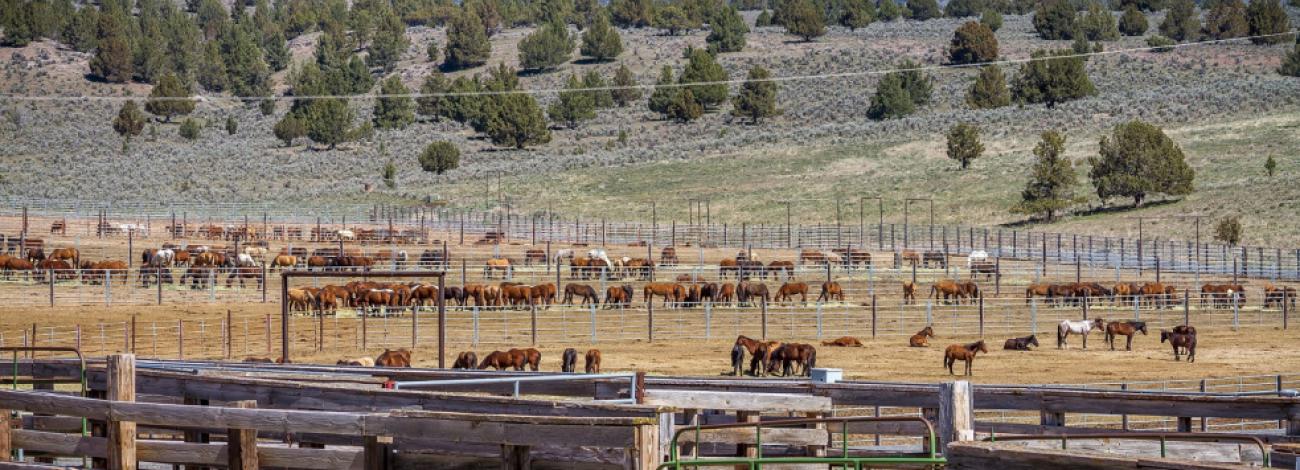
Oregon Wild Horse Corral
As a result of amendments to the Wild Free-Roaming Horse and Burro Act in 1976 and 1978 which addressed problems created by the growing populations on the range, BLM identified appropriate management levels and developed a process to remove excess animals. The need for the corrals became apparent when wild horse and burro populations on public lands increased to such numbers that more intensive management became necessary. Animals removed from the Oregon range are brought here and prepared for the adoption program. Periodically, wild burros from California and Arizona are also brought here for adoption.
Adoption Preparation
Wild horses are brought off the range to the corrals where they are immediately separated into pens by age and sex. The mares with foals are kept together while weanlings and yearlings, dry mares, studs, and geldings are kept in their respective, separate pens.
Within a short time of their arrival, the horses are given a health inspection by a veterinarian. Animals with any injuries or disease are treated immediately. All animals are prepared for adoption in the chute area located under the barn where they are checked for age, vaccinated against disease, wormed and freeze marked. Horses are aged by inspecting their teeth.
The horses are vaccinated against such diseases as Rhinopneumonitis, influenza, tetanus, sleeping sickness, strangles, Rabies, and West Nile Virus. The animals are also wormed to rid them of internal parasites. If animals are kept for long periods of time, their hooves are trimmed periodically, as the ground in the pens and pastures is soft and hooves do not wear down as readily as they did when the horses lived on the range and roamed over rougher terrain.
Facility Layout
The pens near the barn are used as working pens where horses and burros are separated for various reasons whether for shipping, health inspections or viewing for adoption. Note the numerous gates, small side pens, wings and alleyways which make it easier to work with the animals. The larger holding pens are to the north and are connected to the working pens and alleyways. The horses and burros are kept in these pens unless they are to be shipped out in a very short time. The eastern pens are reserved for female animals and the western pens hold the males. The large barn and handling facility was built in 2001 to replace the old wooden barn which was lost to fire.
Adoption and Tours
Organized tours of the wild horse corrals and facilities are available upon request. They can be scheduled for just a few people as well as larger groups. We welcome the opportunity to explain the various aspects of the wild horse program whether it concerns range management, roundups, preparation at the corrals or the adoption program. This facility also has an Auto Tour Route around the entire facility, allowing visitors to drive themselves and stop at pens of interest to look at the horses close-up.
If you are interested in adopting a wild horse or burro or taking a tour, please visit the corral facility, stop by the BLM office at 28910 Highway 20 West in Hines, or give us a call at 541-573-4400. We will be glad to explain the process and requirements for adoption.
Visit our Flickr page for more photos: @BLMOregon Flickr.
